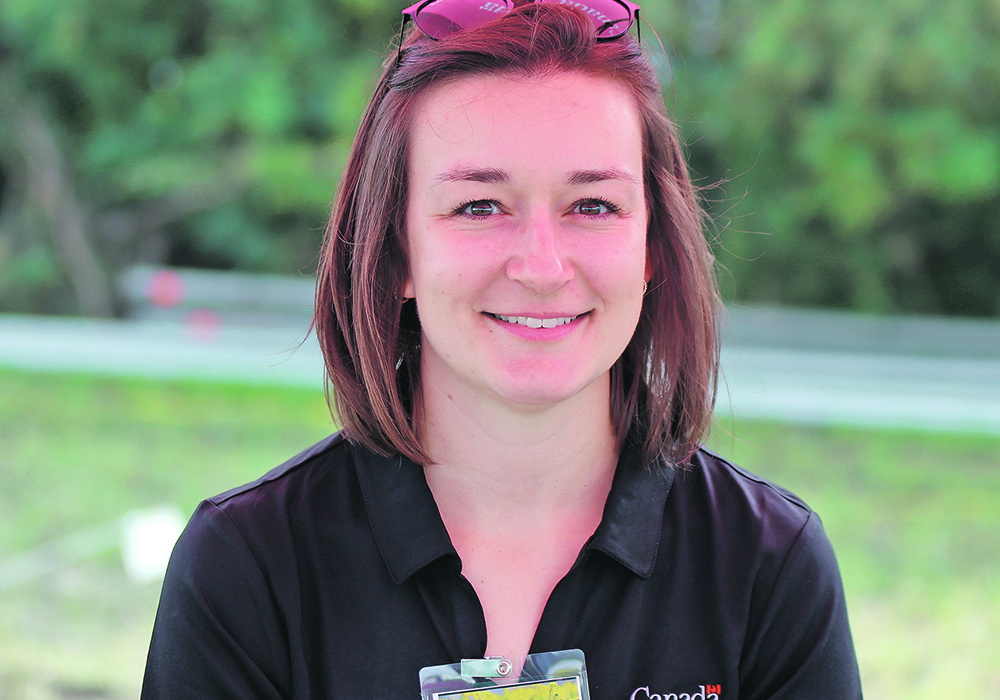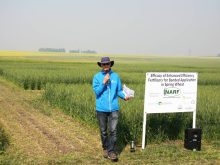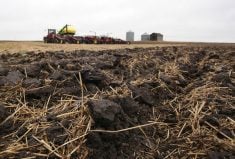A University of Manitoba researcher targets the ability of volunteer canola seed to stay dormant in the soil after harvest
A PhD candidate at the University of Manitoba has taken on a problem many western Canadian growers face; volunteer canola.
Caroline Brown said this weed is the second most common on the Prairies, according to the most recent Agriculture Canada survey of weed abundance that took place in 2019 and 2021.
“I’m working on identifying genes controlling secondary dormancy in canola,” Brown said during the Ag In Motion outdoor farm show held near Saskatoon in July.
She said primary dormancy in canola is not common, but it occurs on the mother plant to prevent pre-harvest sprouting.
Read Also

Short rapeseed crop may put China in a bind
Industry thinks China’s rapeseed crop is way smaller than the official government estimate. The country’s canola imports will also be down, so there will be a lot of unmet demand.
“Secondary dormancy occurs once the seed is matured and is faced with adverse conditions — like low light, moisture, and temperature. The seed knows it’s not a good time to germinate because it’s not going to survive,” Brown said.
“So, it’s able to be induced into this secondary dormancy, which it can persist for a long time before conditions become more favourable.”
Growers face a significant management problem with volunteer canola because the seed typically comes out of secondary dormancy with herbicide resistance traits that make it difficult to control.
Brown is working on phenotyping a diversity collection of canola varieties and collecting the data on different dormancy levels, and then associating those dormancy levels with the canola genomes that have been sequenced.
“We have all of the single nucleotide polymorphisms. We know the genetics of these lines. So, I’m performing a genome-wide association study to find the correlations between the phenotype and the genotype,” Brown said.
“We’ve found relationships between secondary dormancy and other seed traits. We’re finding a weak but still present correlation with seed protein, and we’re going to be working on exploring that a little bit deeper.”
This will include protein fractionation to see if there are stronger associations between certain components of the protein.
Gene expression studies are also planned.
“Will be inducing the lines into dormancy and then studying them over a certain time period to see if there are gene expressions that we can detect, and then if there are changes over time.
“If we can reduce the ability of the seed to be induced into secondary dormancy by selecting against the high dormancy genotypes, the seed that does enter the ground won’t be able to persist for long periods of time. It’ll germinate and emerge in the fall and be killed over the winter,” Brown said.
She said commercial breeding programs already select for many characteristics, so selecting for secondary dormancy at this level might not be possible.
“However, with these markers they could screen their diverse populations, the germplasm that they’re bringing in because the less domesticated the genotype is, the higher the chances that it’s probably going to have a little bit more secondary dormancy,” Brown said.
“So, they could screen the lines and make sure they’re not bringing in genotypes that have an even higher propensity to secondary dormancy that already exists.”
She said the reduction of secondary dormancy will not likely affect seed germination or vigour traits.
















